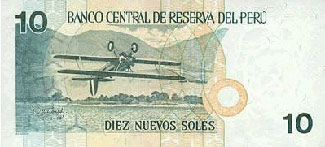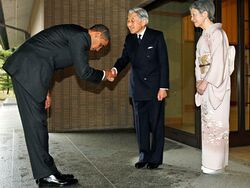Victory lap
A victory lap is an extra lap driven by the winner of a race in motorsports. This lap lets the winner celebrate his victory. It also lets spectators bask in his reflected glory (BIRG) as though they had drilled the hole in his restrictor plate, or at least turn inside-out the commemorative jackets of his competitors that they were wearing.
Victory laps are driven at slower speeds than the race, because spectators climb over the "safety" nets and mob the track, hoping for autographs, or to break off a piece of the winning car and put it on eBay.
Drivers whose cars conk out often hitch a ride back to the pits with the winner during the latter's victory lap, especially as the reverse is not possible. Often, this is a compromise after the winner refuses to let the loser chain his vehicle behind the winner's to get a tow.
Recently, the FIA has restricted what a Formula One driver may do on his victory lap. Its rules state that "all cars must proceed directly to the parc fermé without stopping, without overtaking (unless clearly necessary), without receiving any object whatsoever (though drinks may be "freshened up"), and without touching their wee-wees (unless clearly necessary)." The parc fermé is just outside Paris.
Polish victory lap[edit]
A Polish victory lap is a victory lap where the driver turns his car around and drives in the opposite direction. As well as defiantly flouting the rules of competition — a notion assisted if he first steals the checkered flag — this lets him show himself to the fans out of the driver's-seat window of his car, rather than hiding from the grandstand as he had been doing during the entire race.
It is called Polish to honor Alan Kulwicki, who drove the first clockwise victory lap to celebrate his victory in the 1988 Labatt's Solo cup. A Ford engineer slapped Kulwicki on the back and said, "What are you, a Polack or something?" Imagine his mortification.
The term became widespread after Kulwicki's death from a high-speed head-on collision. Hours after Kulwicki's death, Peter Jellen drove Kulwicki’s racecar hauler the wrong way down Bristol Motor Speedway. Two days later, Michael Waltrip honored his short-track foe by mimicking his stunt. Rusty Wallace drove the wrong way during each race of the 1993 season. It caught on so quickly that most American race tracks on the NASCAR circuit have been declared two-way thoroughfares, despite the sudden need for NO PASSING zones.
Negro victory lap[edit]
Most of the administration of U.S. President Barack Obama was one gavel-to-gavel victory lap. The lap technically began in September 2008, four months before he officially received his Obama-pen and Obama-phone, when it became clear that John McCain would fire any aide who either referred to Obama's middle name or his country of origin. Obama drove neither clockwise nor counterclockwise, but generally conducted his victory lap by inviting Congressional leaders to drive to the White House to participate in a bi-partisan unity government by agreeing to all his bills without any amendments.
Part of this "victory lap" was spent in Europe, where the President called himself a "citizen of the world" and announced that ocean levels were about to start receding. European leaders lapped this up, as it would allow new islands to surface in the middle of the Atlantic Ocean that they could go to war over. Obama took additional victory laps after his party's notorious defeats in 2010 and 2014.
The Presidential "victory lap" has now become an American tradition. New Presidents spend that giddy first week in the Oval Office writing and signing Executive Orders before the lawyers have had a chance to think them through. For instance, during Donald Trump's victory lap in 2017, he took decisive, unilateral action to protect The Homeland by ensuring that foreign students who go to Montreal for the weekend cannot get back in.



